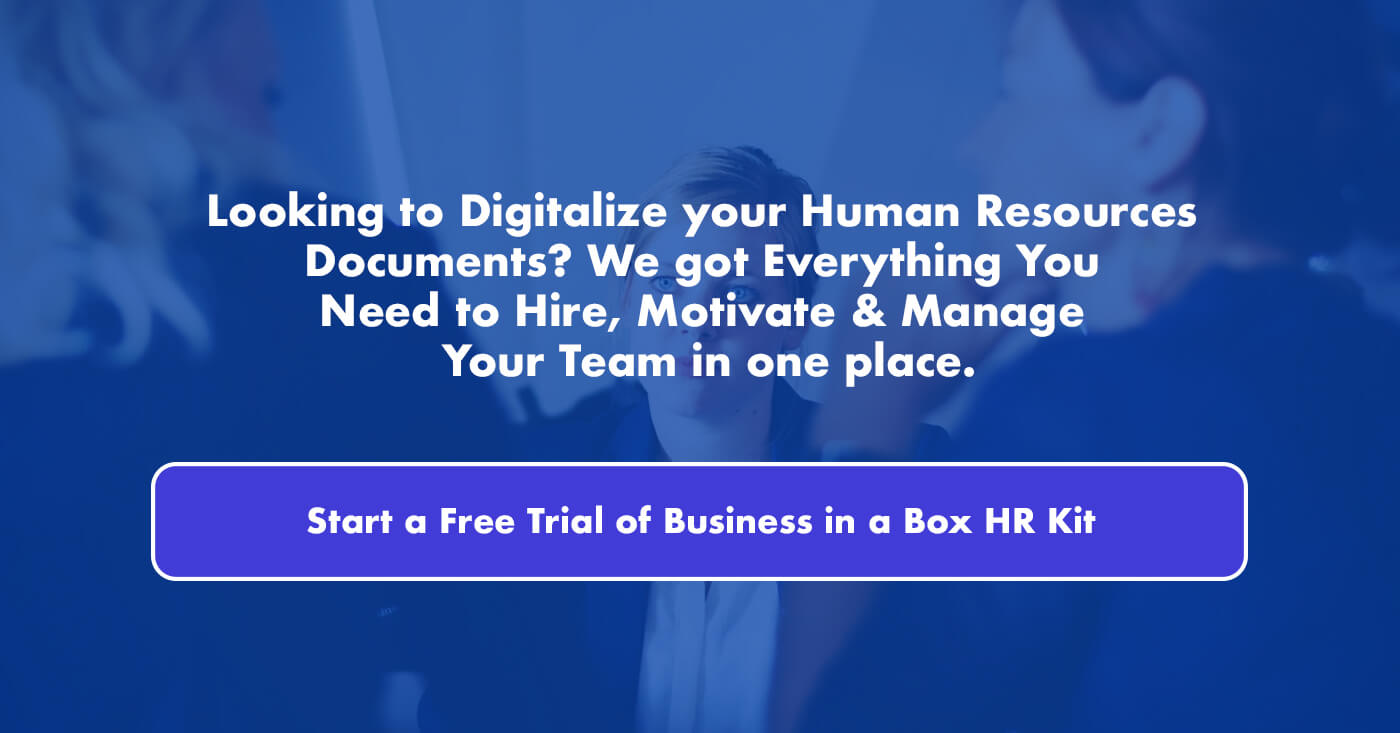Your Approach to Hiring Is All Wrong
Outsourcing and algorithms won’t get you the people you need.
Businesses have never done as much hiring as they do today. They’ve never spent as much money doing it. And they’ve never done a worse job of it.
For most of the post–World War II era, large corporations went about hiring this way: Human resources experts prepared a detailed job analysis to determine what tasks the job required and what attributes a good candidate should have. Next, they did a job evaluation to determine how the job fit into the organizational chart and how much it should pay, especially compared with other jobs. Ads were posted, and applicants applied. Then came the task of sorting through the applicants. That included skills tests, reference checks, maybe personality and IQ tests, and extensive interviews to learn more about them as people. William H. Whyte, in The Organization Man, described this process as going on for as long as a week before the winning candidate was offered the job. The vast majority of non-entry-level openings were filled from within.
Today’s approach couldn’t be more different. Census data shows, for example, that the majority of people who took a new job last year weren’t searching for one: Somebody came and got them. Companies seek to fill their recruiting funnel with as many candidates as possible, especially “passive candidates,” who aren’t looking to move. Often employers advertise jobs that don’t exist, hoping to find people who might be useful later on or in a different context.
The recruiting and hiring function has been eviscerated. Many U.S. companies—about 40%, according to research by Korn Ferry—have outsourced much if not all of the hiring process to “recruitment process outsourcers,” which in turn often use subcontractors, typically in India and the Philippines. The subcontractors scour LinkedIn and social media to find potential candidates. They sometimes contact them directly to see whether they can be persuaded to apply for a position and negotiate the salary they’re willing to accept. (The recruiters get incentive pay if they negotiate the amount down.) To hire programmers, for example, these subcontractors can scan websites that programmers might visit, trace their “digital exhaust” from cookies and other user-tracking measures to identify who they are, and then examine their curricula vitae.
At companies that still do their own recruitment and hiring, managers trying to fill open positions are largely left to figure out what the jobs require and what the ads should say. When applications come—always electronically—applicant-tracking software sifts through them for keywords that the hiring managers want to see. Then the process moves into the Wild West, where a new industry of vendors offers an astonishing array of smart-sounding tools that claim to predict who will be a good hire. They use voice recognition, body language, clues on social media, and especially machine learning algorithms—everything but tea leaves. Entire publications are devoted to what these vendors are doing.
The big problem with all these new practices is that we don’t know whether they actually produce satisfactory hires. Only about a third of U.S. companies report that they monitor whether their hiring practices lead to good employees; few of them do so carefully, and only a minority even track cost per hire and time to hire. Imagine if the CEO asked how an advertising campaign had gone, and the response was “We have a good idea how long it took to roll out and what it cost, but we haven’t looked to see whether we’re selling more.”
Hiring talent remains the number one concern of CEOs in the most recent Conference Board Annual Survey; it’s also the top concern of the entire executive suite. PwC’s 2017 CEO survey reports that chief executives view the unavailability of talent and skills as the biggest threat to their business. Employers also spend an enormous amount on hiring—an average of $4,129 per job in the United States, according to Society for Human Resource Management estimates, and many times that amount for managerial roles—and the United States fills a staggering 66 million jobs a year. Most of the $20 billion that companies spend on human resources vendors go to hiring.
Why do employers spend so much on something so important while knowing so little about whether it works?
Where the Problem Starts
Survey after survey finds employers complaining about how difficult hiring is. There may be many explanations, such as their having become very picky about candidates, especially in the slack labor market of the Great Recession. But clearly, they are hiring much more than at any other time in modern history, for two reasons.
The first is that openings are now filled more often by hiring from the outside than by promoting from within. In the era of lifetime employment, from the end of World War II through the 1970s, corporations filled roughly 90% of their vacancies through promotions and lateral assignments. Today the figure is a third or less. When they hire from outside, organizations don’t have to pay to train and develop their employees. Since the restructuring waves of the early 1980s, it has been relatively easy to find experienced talent outside. Only 28% of talent acquisition leaders today report that internal candidates are an important source of people to fill vacancies—presumably because of less internal development and fewer clear career ladders.
Less promotion internally means that hiring efforts are no longer concentrated on entry-level jobs and recent graduates. (If you doubt this, go to the “careers” link on any company website and look for a job opening that doesn’t require prior experience.) Now companies must be good at hiring across most levels because the candidates they want are already doing the job somewhere else. These people don’t need training, so they may be ready to contribute right away, but they are much harder to find.
The second reason hiring is so difficult is that retention has become tough: Companies hire from their competitors and vice versa, so they have to keep replacing people who leave. Census and Bureau of Labor Statistics data show that 95% of hiring is done to fill existing positions. Most of those vacancies are caused by voluntary turnover. LinkedIn data indicates that the most common reason employees consider a position elsewhere is career advancement—which is surely related to employers’ not promoting to fill vacancies.
The root cause of most hiring, therefore, is drastically poor retention. Here are some simple ways to fix that:
Track the percentage of openings filled from within.
An adage of business is that we manage what we measure, but companies don’t seem to be applying that maxim to tracking hires. Most are shocked to learn how few of their openings are filled from within—is it really the case that their people can’t handle different and bigger roles?
Require that all openings be posted internally.
Internal job boards were created during the dot-com boom to reduce turnover by making it easier for people to find new jobs within their existing employer. Managers weren’t even allowed to know if a subordinate was looking to move within the company, for fear that they would try to block that person and he or she would leave. But during the Great Recession employees weren’t quitting, and many companies slid back to the old model whereby managers could prevent their subordinates from moving internally. JR Keller, of Cornell University, has found that when managers could fill a vacancy with someone they already had in mind, they ended up with employees who performed more poorly than those hired when the job had been posted and anyone could apply. The commonsense explanation for this is that few enterprises really know what talent and capabilities they have.
Protecting Against Discrimination
Recognize the costs of outside hiring.
In addition to the time and effort of hiring, my colleague Matthew Bidwell found, outside hires take three years to perform as well as internal hires in the same job, while internal hires take seven years to earn as much as outside hires are paid. Outside hiring also causes current employees to spend time and energy positioning themselves for jobs elsewhere. It disrupts the culture and burdens peers who must help new hires figure out how things work.
None of this is to suggest that outside hiring is necessarily a bad idea. But unless your company is a Silicon Valley gazelle, adding new jobs at a furious pace, you should ask yourself some serious questions if most of your openings are being filled from outside.
Employers are obsessed with new technologies and driving down costs.
A different approach for dealing with retention (which seems creepy to some) is to try to determine who is interested in leaving and then intervene. Vendors like Jobvite comb social media and public sites for clues, such as LinkedIn profile updates. Measuring “flight risk” is one of the most common goals of companies that do their own sophisticated HR analytics. This is reminiscent of the early days of job boards, when employers would try to find out who was posting résumés and either punish them or embrace them, depending on leadership’s mood.
Whether companies should be examining social media content in relation to hiring or any other employment action is a challenging ethical question. On one hand, the information is essentially public and may reveal relevant information. On the other hand, it is invasive, and candidates are rarely asked for permission to scrutinize their information. Hiring a private detective to shadow a candidate would also gather public information that might be relevant, yet most people would view it as an unacceptable invasion of privacy.
The Hiring Process
When we turn to hiring itself, we find that employers are missing the forest for the trees: Obsessed with new technologies and driving down costs, they largely ignore the ultimate goal: making the best possible hires. Here’s how the process should be revamped:
Don’t post “phantom jobs.”
It costs nothing to post job openings on a company website, which are then scooped up by Indeed and other online companies and pushed out to potential job seekers around the world. Thus it may be unsurprising that some of these jobs don’t really exist. Employers may simply be fishing for candidates. (“Let’s see if someone really great is out there and if so, we’ll create a position for him or her.”) Often job ads stay up even after positions have been filled, to keep collecting candidates for future vacancies or just because it takes more effort to pull the ad down than to leave it up. Sometimes ads are posted by unscrupulous recruiters looking for résumés to pitch to clients elsewhere. Because these phantom jobs make the labor market look tighter than it really is, they are a problem for economic policymakers as well as for frustrated job seekers. Companies should take ads down when jobs are filled.
Design jobs with realistic requirements.
Figuring out what the requirements of a job should be—and the corresponding attributes candidates must have—is a bigger challenge now, because so many companies have reduced the number of internal recruiters whose function, in part, is to push back on hiring managers’ wish lists. (“That job doesn’t require 10 years of experience,” or “No one with all those qualifications will be willing to accept the salary you’re proposing to pay.”) My earlier research found that companies piled on job requirements and baked them into the applicant-tracking software that sorted résumés according to binary decisions (yes, it has the keyword; no, it doesn’t), and then found that virtually no applicants met all the criteria. Trimming recruiters, who have expertise in hiring, and handing the process over to hiring managers is a prime example of being penny-wise and pound-foolish.
Reconsider your focus on passive candidates.
The recruiting process begins with a search for experienced people who aren’t looking to move. This is based on the notion that something may be wrong with anyone who wants to leave his or her current job. (Of the more than 20,000 talent professionals who responded to a LinkedIn survey in 2015, 86% said their recruiting organizations focused “very much so” or “to some extent” on passive candidates; I suspect that if anything, that number has since grown.) Recruiters know that the vast majority of people are open to moving at the right price: Surveys of employees find that only about 15% are not open to moving. As the economist, Harold Demsetz said when asked by a competing university if he was happy working where he was: “Make me unhappy.”
Fascinating evidence from the LinkedIn survey cited above shows that although self-identified “passive” job seekers are different from “active” job seekers, it’s not in the way we might think. The number one factor that would encourage the former to move is more money. For active candidates, the top factor is better to work and career opportunities. More active than passive job seekers report that they are passionate about their work, engaged in improving their skills, and reasonably satisfied with their current jobs. They seem interested in moving because they are ambitious, not because they want higher pay.
Employers spend a vastly disproportionate amount of their budgets on recruiters who chase passive candidates, but on average they fill only 11% of their positions with individually targeted people, according to research by Gerry Crispin and Chris Hoyt, of CareerXroads. I know of no evidence that passive candidates become better employees, let alone that the process is cost-effective. If you focus on passive candidates, think carefully about what that actually gets you. Better yet, check your data to find out.
Understand the limits of referrals.
The most popular channel for finding new hires is through employee referrals; up to 48% come from them, according to LinkedIn research. It seems like a cheap way to go, but does it produce better hires? Many employers think so. It’s hard to know whether that’s true, however, given that they don’t check. And research by Emilio Castilla and colleagues suggests otherwise: They find that when referrals work out better than other hires, it’s because their referrers look after them and essentially onboard them. If a referrer leaves before the new hire begins, the latter’s performance is no better than that of nonreferrals, which is why it makes sense to pay referral bonuses six months or so after the person is hired—if he or she is still there.
A downside to referrals, of course, is that they can lead to a homogeneous workforce because the people we know tend to be like us. This matters greatly for organizations interested in diversity since recruiting is the only avenue allowed under U.S. law to increase diversity in a workforce. The Supreme Court has ruled that demographic criteria cannot be used even to break ties among candidates.
Measure the results.
Few employers know which channel produces the best candidates at the lowest cost because they don’t track the outcomes. Tata is an exception: It has long done what I advocate. For college recruiting, for example, calculates which schools send employees who perform the best, stay the longest, and are paid the lowest starting wage. Other employers should follow suit and monitor recruiting channels and employees’ performance to identify which sources produce the best results.
Persuade fewer people to apply.
The hiring industry pays a great deal of attention to “the funnel,” whereby readers of a company’s job postings become applicants, are interviewed, and ultimately are offered jobs. Contrary to the popular belief that the U.S. job market is extremely tight right now, most jobs still get lots of applicants. Recruiting and hiring consultants and vendors estimate that about 2% of applicants receive offers. Unfortunately, the main effort to improve hiring—virtually always aimed at making it faster and cheaper—has been to shovel more applicants into the funnel. Employers do that primarily through marketing, trying to get out the word that they are great places to work. Whether doing this is a misguided way of trying to attract better hires or just meant to make the organization feel more desirable isn’t clear.
The Grass Is Always Greener…

Much better to go in the other direction: Create a smaller but better-qualified applicant pool to improve the yield. Here’s why: Every applicant costs you money—especially now, in a labor market where applicants have started to “ghost” employers, abandoning their applications midway through the process. Every application also exposes a company to legal risk, because the company has obligations to candidates (not to discriminate, for example) just as it does to employees. And collecting lots of applicants in a wide funnel means that a great many of them won’t fit the job or the company, so employers have to rely on the next step of the hiring process—selection—to weed them out. As we will see, employers aren’t good at that.
Once people are candidates, they may not be completely honest about their skills or interests—because they want to be hired—and employers’ ability to find out the truth is limited. More than a generation ago the psychologist John Wanous proposed giving applicants a realistic preview of what the job is like. That still makes sense as a way to head off those who would end up being unhappy in the job. It’s not surprising that Google has found a way to do this with gamification: Job seekers see what the work would be like by playing a game version of it. Marriott has done the same, even for low-level employees. Its My Marriott Hotel game targets young people in developing countries who may have had little experience in hotels to show them what it’s like and to steer them to the recruiting site if they score well on the game. The key for any company, though, is that the preview should make clear what is difficult and challenging about the work as well as why it’s fun so that candidates who don’t fit won’t apply.
It should be easy for candidates to learn about a company and a job, but making it really easy to apply, just to fill up that funnel, doesn’t make much sense. During the dot-com boom Texas Instruments cleverly introduced a pre-employment test that allowed applicants to see their scores before they applied. If their scores weren’t high enough for the company to take their applications seriously, they tended not to proceed, and the company saved the cost of having to process their applications.
If the goal is to get better hires in a cost-effective manner, it’s more important to scare away candidates who don’t fit than to jam more candidates into the recruiting funnel.
Test candidates’ standard skills.
How to determine which candidates to hire—what predicts who will be a good employee—has been rigorously studied at least since World War I. The personnel psychologists who investigated this have learned much about predicting good hires that contemporary organizations have since forgotten, such as that neither college grades nor unstructured sequential interviews (hopping from office to office) are a good predictor, whereas past performance is.
Since it can be difficult (if not impossible) to glean sufficient information about an outside applicant’s past performance, what other predictors are good? There is remarkably little consensus even among experts. That’s mainly because a typical job can have so many tasks and aspects, and different factors predict success at different tasks.
There is general agreement, however, that testing to see whether individuals have standard skills is about the best we can do. Can the candidate speak French? Can she do simple programming tasks? And so forth. But just doing the tests is not enough. The economists Mitchell Hoffman, Lisa B. Kahn, and Danielle Li found that even when companies conduct such tests, hiring managers often ignore them—and when they do, they get worse hires. The psychologist Nathan Kuncel and colleagues discovered that even when hiring managers use objective criteria and tests, applying their own weights and judgment to those criteria leads them to pick worse candidates than if they had used a standard formula. Only 40% of employers, however, do any tests of skills or general abilities, including IQ. What are they doing instead? Seventy-four percent do drug tests, including for marijuana use; even employers in states where recreational use is now legal still seem to do so.
Be wary of vendors bearing high-tech gifts.
Into the testing void has come a new group of entrepreneurs who either are data scientists or have them in tow. They bring a fresh approach to the hiring process—but often with little understanding of how hiring actually works. John Sumser, of HRExaminer, an online newsletter that focuses on HR technology, estimates that on average, companies get five to seven pitches every day—almost all of them about hiring—from vendors using data science to address HR issues. These vendors have all sorts of cool-sounding assessments, such as computer games that can be scored to predict who will be a good hire. We don’t know whether any of these actually lead to better hires, because few of them are validated against actual job performance. That aside, these assessments have spawned a counterwave of vendors who help candidates learn how to score well on them. Lloyds Bank, for example, developed a virtual-reality-based assessment of candidate potential, and JobTestPrep offers to teach potential candidates how to do well on it. Especially for IT and technical jobs, cheating on skills tests and even video interviews (where colleagues off-camera give help) is such a concern that eTeki and other specialized vendors help employers figure out who is cheating in real-time.
Revamp your interviewing process.
The amount of time employers spend on interviews has almost doubled since 2009, according to research from Glassdoor. How much of that increase represents delays in setting up those interviews is impossible to tell, but it provides at least a partial explanation for why it takes longer to fill jobs now. Interviews are arguably the most difficult technique to get right because interviewers should stick to questions that predict good hires—mainly about past behavior or performance that’s relevant to the tasks of the job—and ask them consistently across candidates. Just winging it and asking whatever comes to mind is next to useless.
More important, interviews are where biases most easily show up, because interviewers do usually decide on the fly what to ask of whom and how to interpret the answer. Everyone knows some executive who is absolutely certain he knows the one question that will really predict good candidates (“If you were stranded on a desert island…”). The sociologist Lauren Rivera’s examination of interviews for elite positions, such as those in professional services firms, indicates that hobbies, particularly those associated with the rich, feature prominently as a selection criterion.
Interviews are most important for assessing “fit with our culture,” which is the number one hiring criterion employers report using, according to research from the Rockefeller Foundation. It’s also one of the squishiest attributes to measure because few organizations have an accurate and consistent view of their own culture—and even if they do, understanding what attributes represent a good fit is not straightforward. For example, does the fact that an applicant belonged to a fraternity reflect experience working with others or elitism or bad attitudes toward women? Should it be completely irrelevant? Letting someone with no experience or training make such calls is a recipe for bad hires and, of course, discriminatory behavior. Think hard about whether your interviewing protocols make any sense and resist the urge to bring even more managers into the interview process.
Recognize the strengths and weaknesses of machine learning models.
Culture fit is another area into which new vendors are swarming. Typically they collect data from current employees, create a machine learning model to predict the attributes of the best ones, and then use that model to hire candidates with the same attributes.
As with many other things in this new industry, that sounds good until you think about it; then it becomes replete with problems. Given the best performers of the past, the algorithm will almost certainly include white and male as key variables. If it’s restricted from using that category, it will come up with attributes associated with being a white male, such as playing rugby.
Machine learning models do have the potential to find important but previously unconsidered relationships. Psychologists, who have dominated research on hiring, have been keen to study attributes relevant to their interests, such as personality, rather than asking the broader question “What identifies a potentially good hire?” Their results gloss over the fact that they often have only a trivial ability to predict who will be a good performer, particularly when many factors are involved. Machine learning, in contrast, can come up with highly predictive factors. Research by Evolv, a workforce analytics pioneer (now part of Cornerstone OnDemand), found that expected commuting distance for the candidate predicted turnover very well. But that’s not a question the psychological models thought to ask. (And even that question has problems.)
The advice on selection is straightforward: Test for skills. Ask assessments vendors to show evidence that they can actually predict who the good employees will be. Do fewer, more-consistent interviews.
→ Click here to download our Hiring Policy Template.
The Way Forward
It’s impossible to get better at hiring if you can’t tell whether the candidates you select become good employees. If you don’t know where you’re going, any road will take you there. You must have a way to measure which employees are the best ones.
Why is that not getting through to companies? Surveyed employers say the main reason they don’t examine whether their practices lead to better hires is that measuring employee performance is difficult. Surely this is a prime example of making the perfect the enemy of the good. Some aspects of performance are not difficult to measure: Do employees quit? Are they absent? Virtually all employers conduct performance appraisals. If you don’t trust them, try something simpler. Ask supervisors, “Do you regret hiring this individual? Would you hire him again?”
Organizations that don’t check to see how well their practices predict the quality of their hires is lacking in one of the most consequential aspects of modern business.
Editor’s Note: A previous version of this article named three recruitment process outsourcing companies, and stated that they utilized subcontractors in India and the Philippines. We have removed the company names after learning that the specifics of their subcontracting practices had not been verified.
Summary.
Businesses have never done as much hiring as they do today and have never done a worse job of it, says Peter Cappelli of Wharton. Much of the process is outsourced to companies such as Randstad, Manpower, and Adecco, which in turn use subcontractors to scour LinkedIn and social media for potential candidates. When applications come—always electronically—software sifts through them for keywords that hiring managers want to see. Vendors offer an array of smart-sounding tools that claim to predict who will be a good hire—but whether they produce satisfactory results is unknown. Cappelli explores what’s wrong with today’s recruiting and hiring and how to fix it.
Data Science Can’t Fix Hiring (Yet)
The rise of data science-driven algorithms to find and assess job candidates is promising because they are not constrained by prior theory and results, but worrying because data scientists seem to know so little about the context of employment, says Cappelli.
Expanding the Pool
Goldman Sachs has revamped its process for entry-level recruiting to include first-round interviews by asynchronous video, doubling the percentage of applicants who get a first-round interview and leveling the playing field between graduates of various colleges. In second-round face-to-face meetings, interviews are now structured and standardized. The result, says Dane E. Holmes, the global head of human capital management, is a fairer, more inclusive, and more efficient process—and the firm’s most diverse entry-level class ever.

























